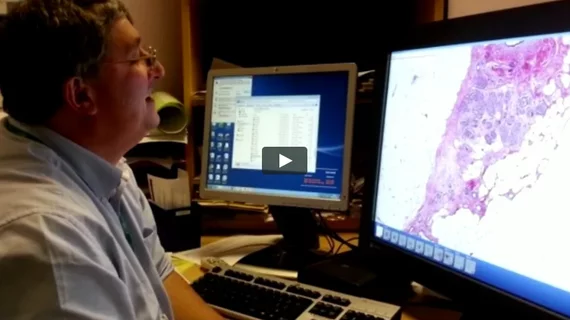Combining CT, pathology results can improve lung ground glass diagnosis
A new study published in Experimental and Therapeutic Medicine found combining a CT scan with pathology results would improve the diagnosis and differential diagnosis of lung ground-glass opacity (GGO).
On high resolution computed tomography (HRCT), GGOs can be associated with many diseases, such as bronchioloalveolar carcinoma (BAC). And in the mediastinal window of a CT scan, GGO is hard to discern, wrote corresponding author, Wenjian Xu, with Affiliated Hospital of Quingdao University in China, and colleagues.
“An increasing number of patients are clinically diagnosed with lung GGO, for unknown reasons,” the authors added. “Timely detection and diagnosis of GGO is critical to future treatment and prognosis.”
With that in mind, the researches set out to investigate the pathogenesis of GGO and evaluate the diagnostic ability of CT on lung GGO.
A total of 106 lung GCO cases were retrospectively analyzed with plain and enhanced CT and evaluated for type, location, size, structure, boundaries and surrounding lung fields.
In order to determine association between GGO and its pathology, GGO was broken down by four types: simple, uneven density, central high density with peripheral burring and nodule GGO. The malignancy ratios were as follows: 68 percent, 61.7 percent, 73.6 percent and 70.5 percent, respectively. The authors wrote these results suggested “CT scan is of clinical importance in the diagnosis of GGO.”
Overall, Xu et al. wrote that by combining characteristics from CT scans—burring, simple, density, etc.—with pathology changes in GGO lesions (incomplete filling of alveolar cavity or lung interstitial thickening), researchers can better diagnose GGOs.
“The diagnosis and differential diagnosis of GGO would be improved with combined CT scan and pathology results,” the authors concluded. “With the development and wide application of CT examination, it can be used as the primary tool for the inspection of focal pulmonary nodules.”

